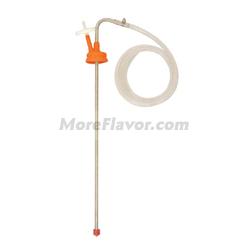I know there are several posts on this subject, but I wanted to describe my method and get some feedback. I had brewed 3 batched previously with no issues, but the last 2 batches I made had the bad aftertaste of oxidized beer, one of which is undrinkable.
The first batch I had in the primary for 2 weeks, and secondary for a little over a month. My secondary fermenter is a 6 gal glass carboy. I first noticed on this batch that my siphon was introducing small bubbles when racking between vessels. When I bottled, I tasted it, and it was actually really good, no hint of bad aftertaste. This batch is now undrinkable.
The second batch was primary for 1 week, and secondary for 3 weeks. Same bubbles in siphon. Tasted fine at bottling.
For these 2 batches I also used the bottle filler that came with my kit for the first time.
I have heard that having the extra 1 gallon of head space on the secondary is not good for the beer. Would this have any impact?
Could this all be attributed to the auto siphon? I am a little doubtful, as the beer tasted fine at bottling. I have since bought a replacement siphon, which I am using on my current in-process batch of beer.
Could it be my method of bottle filling? When using the filler, it seemed like there was a lot of back pressure and it was causing foaming of the beer as it filled the bottles. The first three batches I bottled straight from the spigot on the bottling bucket.
Thanks for the help and input. I really want to get this right so I can start enjoying my beer again!
The first batch I had in the primary for 2 weeks, and secondary for a little over a month. My secondary fermenter is a 6 gal glass carboy. I first noticed on this batch that my siphon was introducing small bubbles when racking between vessels. When I bottled, I tasted it, and it was actually really good, no hint of bad aftertaste. This batch is now undrinkable.
The second batch was primary for 1 week, and secondary for 3 weeks. Same bubbles in siphon. Tasted fine at bottling.
For these 2 batches I also used the bottle filler that came with my kit for the first time.
I have heard that having the extra 1 gallon of head space on the secondary is not good for the beer. Would this have any impact?
Could this all be attributed to the auto siphon? I am a little doubtful, as the beer tasted fine at bottling. I have since bought a replacement siphon, which I am using on my current in-process batch of beer.
Could it be my method of bottle filling? When using the filler, it seemed like there was a lot of back pressure and it was causing foaming of the beer as it filled the bottles. The first three batches I bottled straight from the spigot on the bottling bucket.
Thanks for the help and input. I really want to get this right so I can start enjoying my beer again!



